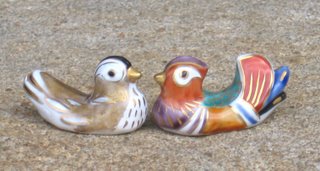:::::::::::::::::::::::::::::::::::::::::::::::::::::::::::::::::::::::::::::::::::::::::::::::::::::
Shibata Zeshin 柴田是真 / しばたぜしん
(1806 - 1891)
painter and plastic arts, laquer ware.
ZESHIN means "the truth of truths".

. Shibata Zeshin - MAIN ENTRY .
:::::::::::::::::::::::::::::::::::::::::::::::::::::::::::::::::::::::::::::::::::::::::::::::::::::
quote
Shibata Zeshin
was a famous and revolutionary Japanese painter and lacquerer of the late Edo period and early Meiji era. In Japan, he is ironically known as both too modern, a panderer to the Westernization movement, and also an overly conservative traditionalist who did nothing to stand out from his contemporaries. Despite holding this odd reputation in Japan, Zeshin has come to be well-regarded and much studied among the art world of the West, in England and the United States in particular.
Zeshin learned not only the basics of painting and sketching, but also Japanese tea ceremony, haiku and waka poetry, history, literature and philosophy. This would form the foundation of his training in not only the techniques of the traditional arts, but also, and perhaps more importantly, the aesthetic and philosophy of Japanese traditional art. Many of his works from the period of his studies with Nanrei were fan paintings. The great ukiyo-e artist Utagawa Kuniyoshi was impressed with these fan paintings and, approaching the young painter, began a friendship which would last for many years.
Today, one of the greatest collections of Zeshin's works is the Khalili Collections of London, containing over 100 works by the artist.
© More in the WIKIPEDIA !
:::::::::::::::::::::::::::::::::::::::::::::::::::::::::::::::::::::::::::::::::::::::::::::::::::::

Shibata Zeshin: Masterpieces of Japanese Lacquer
from the Khalili Collection
(Nasser D. Khalili Collection of Japanese Art)
by Joe Earle
Combining unparalleled technical skill with a highly individual decorative style, Zeshin's paintings and lacquers are imbued with traditional humour, energy and grace, but are fully in tune with the innovative spirit of Meiji-period Japan.
source : Oxbow Books
笠につく蝶と一つに都入り
kasa ni tsuku choo to hitotsu ni Miyako-iri
on my straw hat
there is one butterfly
when I enter the capital
:::::::::::::::::::::::::::::::::::::::::::::::::::::::::::::::::::::::::::::::::::::::::::::::::::::

A Haiku Menagerie
edited by Stephen Addiss (1992)
The caged bird
envies the butterfly–
just look at its eyes!
Issa
The introduction to this collection looks at the history of haiku and Japanese woodblock books and the relationship these two media have.
Addiss discusses their printed relationship as well as direct influence such as Shibata Zeshin’s “Swallow” as a direct inspiration from an Issa haiku.
source : A Haiku Menagerie
.......................................................................

:::::::::::::::::::::::::::::::::::::::::::::::::::::::::::::::::::::::::::::::::::::::::::::::::::::::::::::::::::::::::::
English Reference
Japanese Reference
Featured in - Daruma Magazine 64 , 2009
:::::::::::::::::::::::::::::::::::::::::::::::::::::::::::::::::::::::::::::::::::::::::::::::::::::::::::::::::::::::::::
Daruma Museum
[ . BACK to WORLDKIGO TOP . ]
:::::::::::::::::::::::::::::::::::::::::::::::::::::::::::::::::::::::::::::::::::::::::::::::::::::::::::::::::::::::::::








1 comment:
koogei, kôgei 工藝 / 工芸 Kogei, industrial art
Meiji koogei 明治工芸 Meiji Kogei
Kiyomizu Sannenzaka Museum 清水三年坂美術館
Jizai Okimono 自在置物 Articulated iron figures of animals
Post a Comment